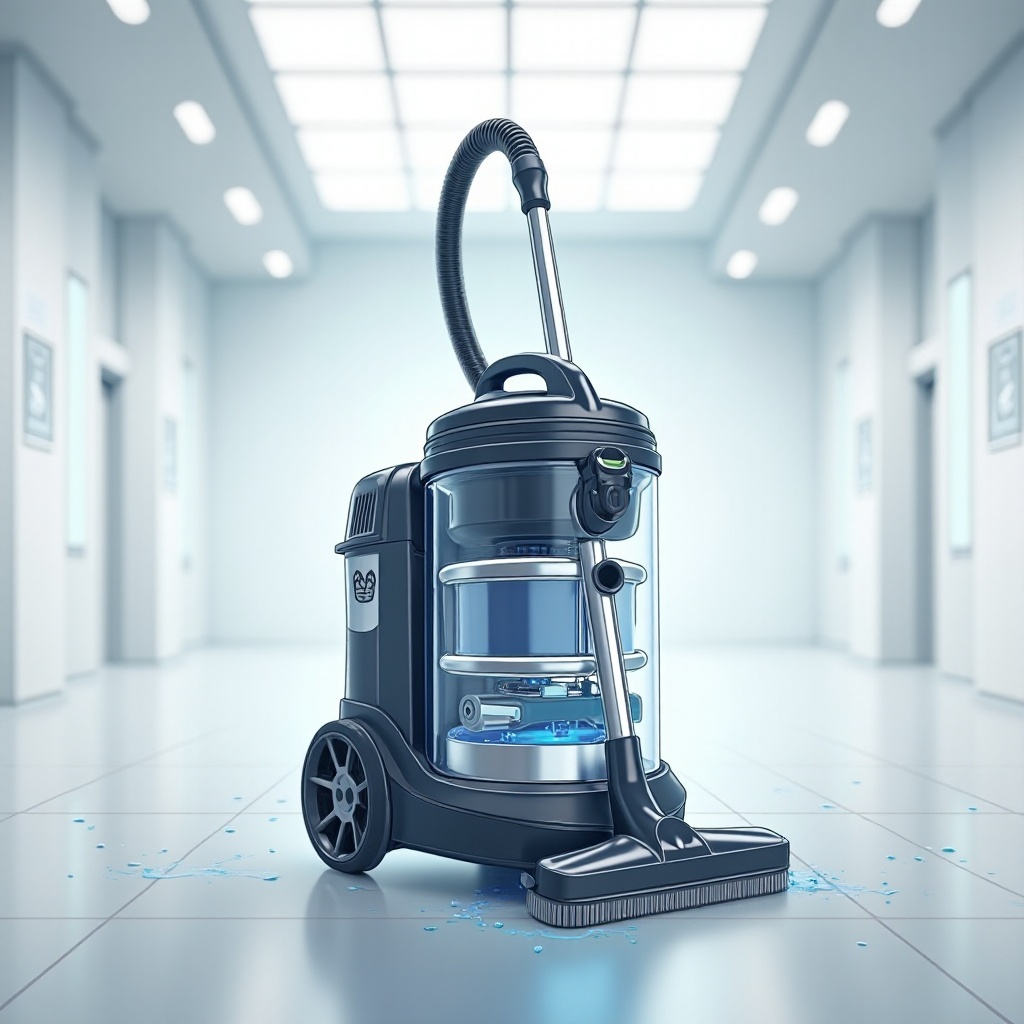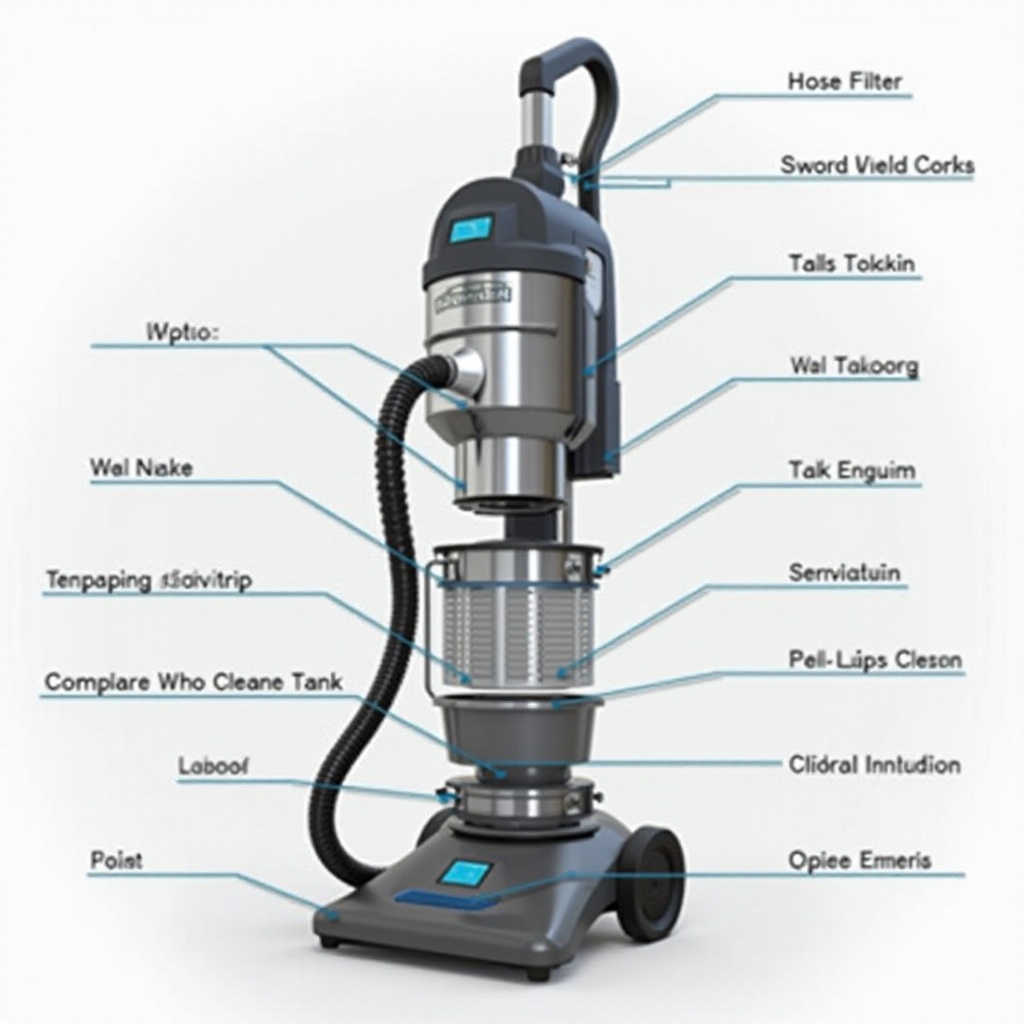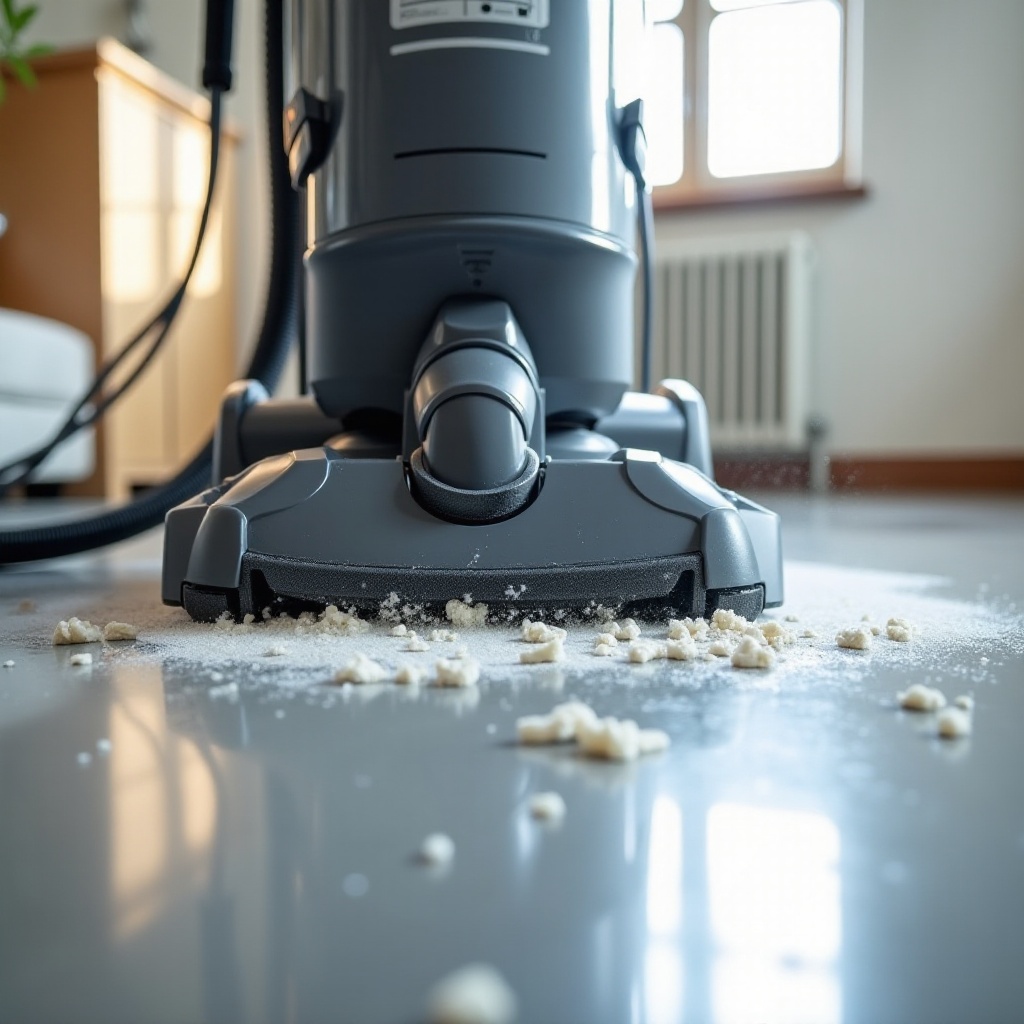Introduction
Wet dry vacuums have become an essential tool for households and workplaces alike, handling both liquid and solid debris with ease. Their versatility and efficiency make countless cleaning tasks less daunting. Understanding how these devices work can enhance their usage and maintenance for optimal performance. In this blog, we delve into the intricacies of wet dry vacuums, breaking down their core components, explaining their mechanism, and discussing best practices for maintenance. Let’s uncover how wet dry vacuums work and explore their numerous benefits.

Understanding Wet Dry Vacuums
A wet dry vacuum, often referred to as a shop vacuum, is a versatile cleaning device designed to handle both wet and dry debris. Unlike traditional vacuums, which are typically limited to dry dirt and dust, wet dry vacuums can tackle spills and even large pieces of debris, making them indispensable in workshops, garages, homes, and industrial setups. Their design ensures they can manage a variety of cleaning tasks with both versatility and robustness.
These vacuums come in various sizes and capacities, catering to different needs. From small, portable units for minor tasks to large, heavy-duty models for extensive cleaning jobs, there is a wet dry vacuum suitable for every purpose. Let’s explore the core components that make these vacuums so reliable and efficient.
Breakdown of Core Components
Motor
The motor is the heart of the wet dry vacuum. It generates the necessary suction power to draw in dirt, dust, liquids, and larger debris. Motors come in various power ratings, indicated in horsepower (HP). Higher HP ratings generally mean more suction power, which is beneficial for heavy-duty tasks. The efficiency and lifespan of the vacuum largely depend on the quality of its motor.
Filter
Filters in wet dry vacuums are crucial in ensuring that dust and other finer particles do not get recirculated into the air. Typically, there are different filters for wet and dry operations. The dry filter traps dust and smaller debris, while a foam filter or similar component is used when vacuuming liquids. These filters need regular cleaning and replacement to maintain efficiency.
Tank and Attachments
The tank, or canister, of the vacuum is where all the collected debris and liquids are stored. Tanks come in various sizes, affecting the vacuum’s capacity to hold dirt before needing to be emptied. Additionally, attachments such as extension wands, nozzles, and brushes enhance the vacuum’s versatility. These attachments allow the vacuum to reach tight spaces, high areas, and different types of surfaces effectively.
Understanding these components provides a foundation for learning how the entire system works. Let’s now see how these pieces come together in the working mechanism of a wet dry vacuum.

The Working Mechanism of Wet Dry Vacuums
The operation of a wet dry vacuum begins with activating the motor, which creates suction. The motor uses an impeller to create a low-pressure area within the canister. This difference in pressure between the canister and the external environment causes air to flow into the vacuum.
- Suction Process: When the vacuum is turned on, the motor-powered impeller creates suction by drawing air and debris through the hose and the respective attachment. The strong airflow ensures that even large or heavy debris is sucked into the vacuum.
- Separation of Debris: As debris travels through the hose, it enters the vacuum’s tank. Here, the air and dirt pass through the first layer of filtration. In dry mode, this is typically a cloth or paper filter that traps dust particles while allowing air to pass through. In wet mode, the vacuum usually bypasses the dry filter to prevent damage, instead using a foam filter to trap liquids.
- Storage in the Tank: The debris and liquids get deposited into the tank. The canister separates bulkier items and liquids from the air, preventing them from reaching the motor. This process is highly efficient, ensuring that the vacuum doesn’t lose suction or suffer damage from ingested materials.
- Exhaust Air: The filtered air, now free from debris, is expelled out of the vacuum through the exhaust port. Some advanced models feature additional filtration at this stage, such as HEPA filters, to eliminate even the smallest airborne particles, ensuring that the air released is clean.
- Switch Modes: Many wet dry vacuums allow users to switch between wet and dry modes easily. This involves changing filters and ensuring the tank is appropriately emptied and cleaned before switching tasks.
By understanding the working mechanism, users can operate wet dry vacuums more effectively, ensuring they utilize their full potential. Now, let’s look at where these versatile devices can be practically applied.
Practical Applications and Uses
Wet dry vacuums are used in a variety of settings due to their flexibility in handling different types of messes:
- Households: In homes, these vacuums are perfect for cleaning up spills, unclogging sinks, and even managing flooded basements. They help in maintaining clean and dry surfaces, especially in areas like kitchens and bathrooms.
- Workshops and Garages: These vacuums excel in environments filled with wood shavings, sawdust, and other debris common in garages and workshops. They help keep these areas clean and safe to work in.
- Construction Sites: Builders and contractors often use wet dry vacuums to manage construction debris, including nails, dust, and mixed materials. They are crucial in keeping the worksite clean and reducing hazards.
- Automobiles: Car owners and detailers benefit from wet dry vacuums to clean car interiors, removing everything from liquid spills to sand and small pebbles. Specialized attachments can reach into tight spaces and handle tough upholstery.
- Industrial and Commercial Uses: In manufacturing plants, wet dry vacuums manage spills and keep production areas free from waste, contributing to safer and more efficient working conditions.
These practical applications highlight the utility and necessity of wet dry vacuums across various settings. With many advantages, let’s dive deeper into the benefits these vacuums offer.
Benefits and Advantages of Wet Dry Vacuums
Wet dry vacuums provide several key benefits that make them invaluable tools:
- Versatility: Capable of handling both wet and dry messes, these vacuums eliminate the need for multiple cleaning devices. This versatility is especially valuable in diverse cleaning scenarios.
- Powerful Suction: The robust motors in wet dry vacuums provide strong suction power, ensuring that even the most stubborn debris is quickly and efficiently cleaned up.
- Durability: Built to withstand tough environments, these vacuums are often more durable than regular household vacuums. They can handle a variety of materials without becoming clogged or damaged.
- Ease of Use: With simple switches and easy-to-attach accessories, wet dry vacuums are user-friendly. They accommodate different cleaning methods with minimal setup time.
- Cost-Effectiveness: By serving multiple purposes, wet dry vacuums save users the cost of buying different devices for varied cleaning needs. Their long lifespan also adds to their cost efficiency.
Recognizing these benefits underlines why maintenance is crucial to keeping these devices in top condition. Let’s look into how you can maintain your wet dry vacuum.
Maintenance and Best Practices
Maintaining your wet dry vacuum is essential to ensure its efficiency and long life:
- Regular Cleaning: After each use, especially when dealing with wet debris, clean out the tank and any attachments used. This prevents mold and unpleasant odors.
- Filter Maintenance: Check and clean the filters regularly. Replace dry filters based on the manufacturer’s instructions, and clean foam filters thoroughly after wet use. Neglecting filter maintenance can reduce suction power and cause damage.
- Check for Clogs: Regularly inspect the hose and attachments for clogs or blockages. Remove any debris to maintain optimal suction and airflow.
- Store Properly: Store the vacuum in a dry and cool place. Proper storage will prevent damage from temperature variations and moisture.
- Motor Care: Ensure the motor is free from dust and debris. Some models allow you to access the motor compartment for cleaning. Follow manufacturer guidelines to avoid voiding the warranty.
- Inspect for Wear and Tear: Routinely check the hose, attachments, and seals for any signs of wear and tear. Replace any damaged parts to maintain the vacuum’s performance.
Implementing these maintenance practices ensures that your wet dry vacuum remains dependable and effective for years to come.

Conclusion
Wet dry vacuums are unparalleled in their ability to handle diverse and challenging cleaning tasks. Their robust construction, versatility, and powerful performance make them indispensable tools in domestic, professional, and industrial settings. Understanding the core components, working mechanism, and maintenance practices allows users to maximize their efficiency and lifespan. Whether you’re dealing with liquid spills, heavy debris, or fine dust, a wet dry vacuum provides a practical and powerful solution to keep your environments clean and safe.
Frequently Asked Questions
Can I use a wet dry vacuum on carpets?
Yes, you can use a wet dry vacuum on carpets to suck up spills and remove embedded dirt. Use appropriate attachments designed for carpet cleaning to avoid damage.
How often should I clean the filter of my wet dry vacuum?
Filters should be cleaned after every use, especially when dealing with wet debris. Regular cleaning ensures optimal performance and prevents clogs.
What should I do if my wet dry vacuum loses suction?
If your vacuum loses suction, check the filters, hose, and attachments for clogs. Ensure the tank is not overfull, and empty it if necessary. Regular maintenance can prevent these issues.
